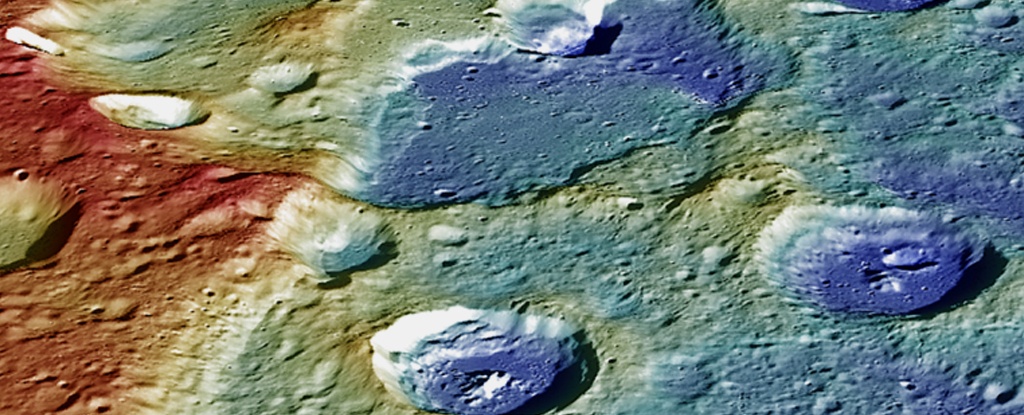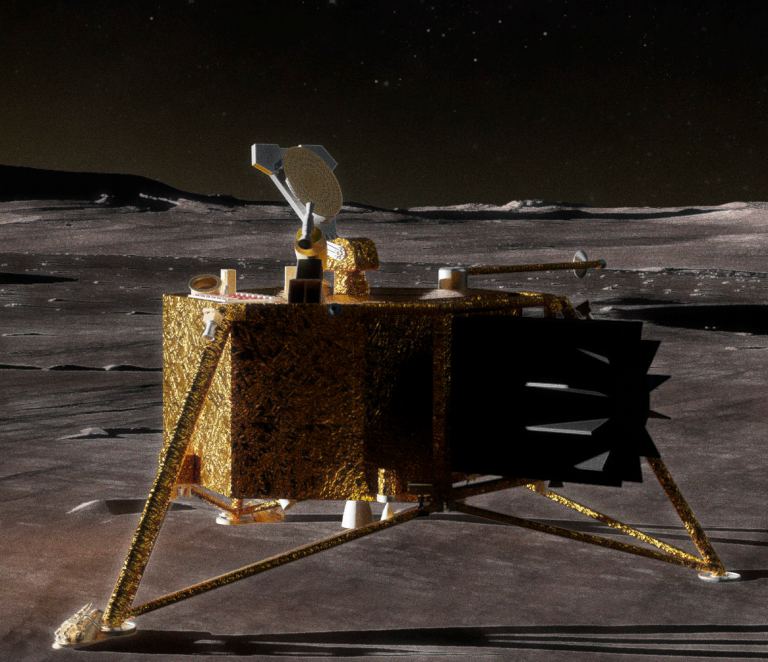It’s not unusual for space probes to complete gravitational flyby manoeuvres en route to their destination. It’s a bit more unusual when the flyby is at the destination planet. ESA’s BepiColombo spacecraft is manoeuvring around Mercury into its final orbit. With each flyby it gets closer and closer and closer until its finally captured by Mercury’s gravity in 2026. During the latest flyby, stunning images of the nearest planet to the Sun were captured from just a few hundred km. Checkout the best and most stunning images of Mercury yet.
Mercury Could be Housing a Megafortune Worth of Diamonds!

Mercury, the closest planet to our Sun, is also one of the least understood in the Solar System. On the one hand, it is similar in composition to Earth and the other rocky planets, consisting of silicate minerals and metals differentiated between a silicate crust and mantle and an iron-nickel core. But unlike the other rocky planets, Mercury’s core makes up a much larger part of its mass fraction. Mercury also has a mysteriously persistent magnetic field that scientists still cannot explain. In this respect, Mercury is also one of the most interesting planets in the Solar System.
But according to new research, Mercury could be much more interesting than previously thought. Based on new simulations of Mercury’s early evolution, a team of Chinese and Belgian geoscientists found evidence that Mercury may have a layer of solid diamond beneath its crust. According to their simulations, this layer is 15 km (9 mi) thick sandwiched between the core and the mantle hundreds of miles beneath the surface. While this makes the diamonds inaccessible (for now, at least), these findings could have implications for theories about the formation and evolution of rocky planets.
Continue reading “Mercury Could be Housing a Megafortune Worth of Diamonds!”Mercury is Still Shrinking
Mercury is considered a scorching, barren landscape that would literally melt your face off if you were standing on it in full sunlight. But scientists have also known for a long time that it was shrinking…because it was cold. New research based on distinct features in Mercury’s geography suggests that it might continue to do so even today.
Continue reading “Mercury is Still Shrinking”There are Deposits of ice at Mercury's Poles too
Although the Arecibo radio telescope is no more, it continues to deliver scientific discoveries. There is a wealth of Arecibo data astronomers continue to mine for new discoveries, and one of them is thanks to an astronomical technique known as planetary radar.
Continue reading “There are Deposits of ice at Mercury's Poles too”It’s Time to Send a Lander to Mercury
So much in the astronomy community revolves around the decadal survey. Teams of dozens of scientists put hundreds of hours developing proposals that eventually try to impact the recommendations of the survey panel that influence billions of dollars in research funding over the following decade. And right now is the prime time to get those proposals in. One of the most ambitious is sponsored by a team led by researchers at John Hopkins University Applied Physics Laboratory (APL). Their suggestion – it’s time to land on Mercury.
Continue reading “It’s Time to Send a Lander to Mercury”The Intense Heat from the Sun Helps Ice Form on Mercury. Wait… What?

While the scorching planet Mercury might not be the first place you’d think to look for ice, the MESSENGER mission confirmed in 2012 that the planet closest to the Sun does indeed hold water ice in the permanently-shadowed craters around its poles. But now a new study regarding Mercury’s ice provides even more counter-intuitive details about how this ice is formed. Scientists say heat likely helps create some of the ice.
Continue reading “The Intense Heat from the Sun Helps Ice Form on Mercury. Wait… What?”More Surface Ice on Mercury than Previously Thought, says New Study

Back in 2012, scientists were delighted to discover that within the polar regions of Mercury, vast amounts of water ice were detected. While the existence of water ice in this permanently-shaded region had been the subject of speculation for about 20 years, it was only after the Mercury Surface, Space Environment, Geochemistry, and Ranging (MESSENGER) spacecraft studied the polar region that this was confirmed.
Based on the MESSENGER data, it was estimated that Mercury could have between 100 billion to 1 trillion tons of water ice at both poles, and that the ice could be up to 20 meters (65.5 ft) deep in places. However, a new study by a team of researchers from Brown University indicates that there could be three additional large craters and many more smaller ones in the northern polar region that also contain ice.
The study, titled “New Evidence for Surface Water Ice in Small-Scale Cold Traps and in Three Large Craters at the North Polar Region of Mercury from the Mercury Laser Altimeter“, was recently published in the Geophysical Research Letters. Led by Ariel Deutsch, a NASA ASTAR Fellow and a PhD candidate at Brown University, the team considered how small-scale deposits could dramatically increase the overall amount of ice on Mercury.
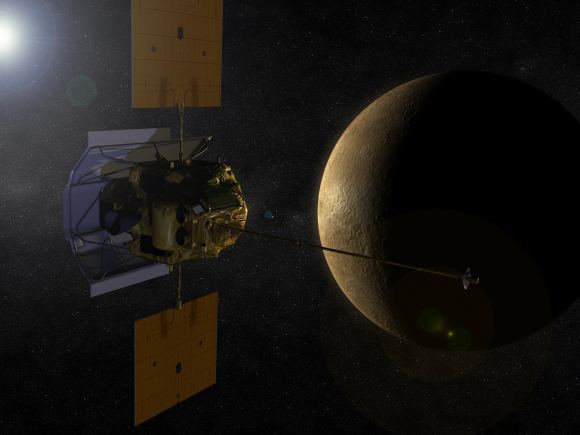
Despite being the closest planet to the Sun, and experiencing scorching surface temperatures on its Sun-facing side, Mercury’s low axial tilt means that its polar regions are permanently shaded and experience average temperatures of about 200 K (-73 °C; -100 °F). The idea that ice might exist in these regions dates back to the 1990s, when Earth-based radar telescopes detected highly reflective spots within the polar craters.
This was confirmed when the MESSENGER spacecraft detected neutron signals from the planet’s north pole that were consistent with water ice. Since that time, it has been the general consensus that Mercury’s surface ice was confined to seven large craters. But as Ariel Deutsch explained in a Brown University press statement, she and her team sought to look beyond them:
“The assumption has been that surface ice on Mercury exists predominantly in large craters, but we show evidence for these smaller-scale deposits as well. Adding these small-scale deposits to the large deposits within craters adds significantly to the surface ice inventory on Mercury.”
For the sake of this new study, Deutsch was joined by Gregory A. Neumann, a research scientist from NASA’s Goddard Space Flight Center, and James W. Head. In addition to being a professor the Department of Earth, Environmental and Planetary Sciences at Brown, Head was also a co-investigator for the MESSENGER and the Lunar Reconnaissance Orbiter missions.
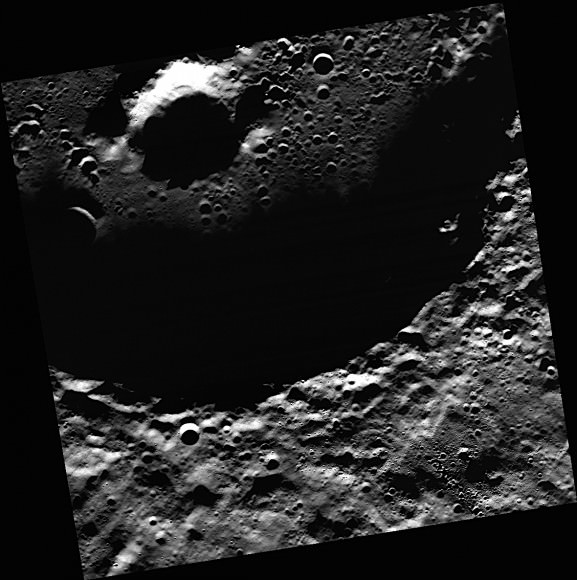
Together, they examined data from MESSENGER’s Mercury Laser Altimeter (MLA) instrument. This instrument was used by MESSENGER to measure the distance between the spacecraft and Mercury, the resulting data being then used to create detailed topographical maps of the planet’s surface. But in this case, the MLA was used to measure surface reflectance, which indicated the presence of ice.
As an instrument specialist with the MESSENGER mission, Neumann was responsible for calibrating the altimeter’s reflectance signal. These signals can vary based on whether the measurements are taken from overhead or at an angle (the latter of which is refereed to as “off-nadir” readings). Thanks to Neumann’s adjustments, researchers were able to detect high-reflectance deposits in three more large craters that were consistent with water ice.
According to their estimates, these three craters could contain ice sheets that measure about 3,400 square kilometers (1313 mi²). In addition, the team also looked at the terrain surrounding these three large craters. While these areas were not as reflective as the ice sheets inside the craters, they were brighter than the Mercury’s average surface reflectance.
Beyond this, they also looked at altimeter data to seek out evidence of smaller scale deposits. What they found was four smaller craters, each with diameters of less than 5 km (3 mi), which were also more reflective than the surface. From this, they deduced that there were not only more large deposits of ice that were previously undiscovered, but likely many smaller “cold traps” where ice could exist as well.
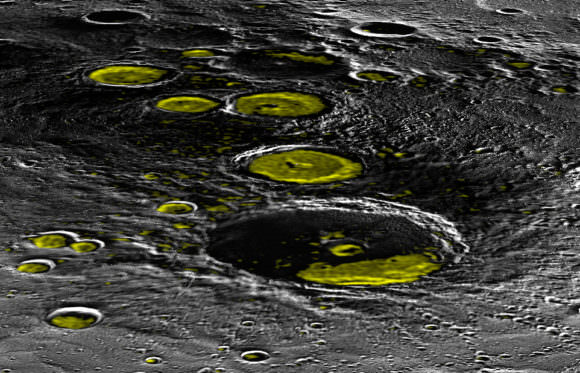
Between these three newly-discovered large deposits, and what could be hundreds of smaller deposits, the total volume of ice on Mercury could be considerably more than we previously thought. As Deutsch said:
“We suggest that this enhanced reflectance signature is driven by small-scale patches of ice that are spread throughout this terrain. Most of these patches are too small to resolve individually with the altimeter instrument, but collectively they contribute to the overall enhanced reflectance… These four were just the ones we could resolve with the MESSENGER instruments. We think there are probably many, many more of these, ranging in sizes from a kilometer down to a few centimeters.”
In the past, studies of the lunar surface also confirmed the presence of water ice in its cratered polar regions. Further research indicated that outside of the larger craters, small “cold traps”could also contain ice. According to some models, accounting for these smaller deposits could effectively double estimates on the total amounts of ice on the Moon. Much the same could be true for Mercury.
But as Jim Head (who also served as Deutsch Ph.D. advisor for this study) indicated, this work also adds a new take to the critical question of where water in the Solar System came from. “One of the major things we want to understand is how water and other volatiles are distributed through the inner Solar System—including Earth, the Moon and our planetary neighbors,” he said. “This study opens our eyes to new places to look for evidence of water, and suggests there’s a whole lot more of it on Mercury than we thought.”
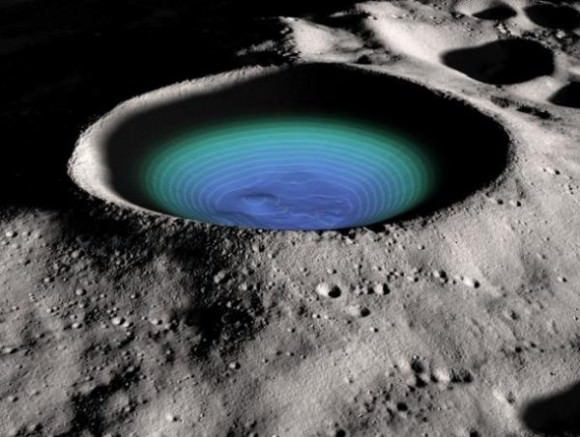
In addition to indicating the Solar System may be more watery than previously suspected, the presence of abundant ice on Mercury and the Moon has bolstered proposals for building outposts on these bodies. These outposts could be capable of turning local deposits water ice into hydrazine fuel, which would drastically reduce the costs of mounting long-range missions throughout the Solar System.
On the less-speculative side of things, this study also offers new insights into how the Solar System formed and evolved. If water is far more plentiful today than we knew, it would indicate that more was present during the early epochs of planetary formation, presumably when it was being distributed throughout the Solar System by asteroids and comets.
Further Reading: Brown University, Geophysical Research Letters
What is the Closest Planet to Earth?
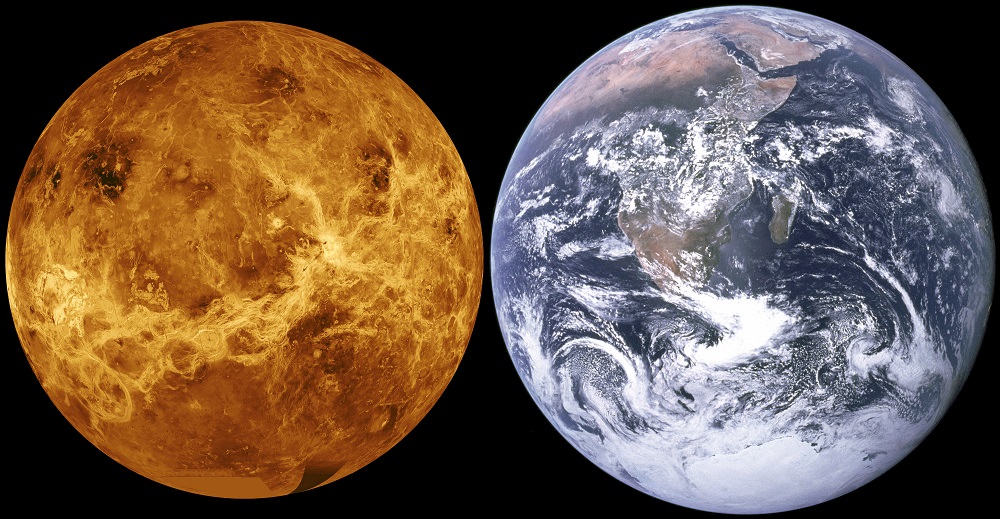
A common question when looking at the Solar System and Earth’s place in the grand scheme of it is “which planet is closest to Earth?” Aside from satisfying a person’s general curiosity, this question is also of great importance when it comes to space exploration. And as humanity contemplates mounting manned missions to neighboring planets, it also becomes one of immense practicality.
If, someday, we hope to explore, settle, and colonize other worlds, which would make for the shortest trip? Invariable, the answer is Venus. Often referred to as “Earth’s Twin“, Venus has many similarities to Earth. It is a terrestrial planet, it orbits within the Sun’s habitable zone, and it has an atmosphere that is believed to have once been like Earth’s. Combined with its proximity to us, its little wonder we consider it our twin.
Venus’ Orbit:
Venus orbits the Sun at an average distance (semi-major axis) of 108,208,000 km (0.723 AUs), ranging between 107,477,000 km (0.718 AU) at perihelion and 108,939,000 km (0.728 AU) at aphelion. This makes Venus’ orbit the least eccentric of all the planets in the Solar System. In fact, with an eccentricity of less than 0.01, its orbit is almost circular.

When Venus lies between Earth and the Sun, it experiences what is known as an inferior conjunction. It is at this point that it makes its closest approach to Earth (and that of any planet) with an average distance of 41 million km (25,476,219 mi). On average, Venus achieves an inferior conjunction with Earth every 584 days.
And because of the decreasing eccentricity of Earth’s orbit, the minimum distances will become greater over the next tens of thousands of years. So not only is it Earth’s closest neighbor (when it makes its closest approach), but it will continue to get cozier with us as time goes on!
Venus vs. Mars:
As Earth’s other neighbor, Mars also has a “close” relationship with Earth. Orbiting our Sun at an average distance of 227,939,200 km (1.52 AU), Mars’ highly eccentric orbit (0.0934) takes it from a distance of 206,700,000 km (1.38 AU) at perihelion to 249,200,000 km (1.666 AU) at aphelion. This makes its orbit one of the more eccentric in our Solar System, second only to Mercury
For Earth and Mars to be at their closest, both planets needs to be on the same side of the Sun, Mars needs to be at its closest distance from the Sun (perihelion), and Earth needs to be at its farthest (aphelion). This is known as opposition, a time when Mars appears as one of the brightest objects in the sky (as a red star), rivaling that of Venus or Jupiter.

But even at this point, the distance between Mars and Earth ranges considerably. The closest approach to take place occurred back in 2003, when Earth and Mars were only 56 million km (3,4796,787 mi) apart. And this was the closest they’d been in 50,000 years. The next closest approach will take place on July 27th, 2018, when Earth and Mars will be at a distance of 57.6 million km (35.8 mi) from each other.
It has also been estimated that the closest theoretical approach would take place at a distance of 54.6 million km (33.9 million mi). However, no such approach has been documented in all of recorded history. One would be forced to wonder then why so much of humanity’s exploration efforts (past, present and future) are aimed at Mars. But when one considers just how horrible Venus’ environment is in comparison, the answer becomes clear.
Exploration Efforts:
The study and exploration of Venus has been difficult over the years, owing to the combination of its dense atmosphere and harsh surface environment. Its surface has been imaged only in recent history, thanks to the development of radar imaging. However, many robotic spacecraft and even a few landers have made the journey and discovered much about Earth’s closest neighbor.
The first attempts were made by the Soviets in the 1960s through the Venera Program. Whereas the first mission (Venera-1) failed due to loss of contact, the second (Venera-3) became the first man-made object to enter the atmosphere and strike the surface of another planet (on March 1st, 1966). This was followed by the Venera-4 spacecraft, which launched on June 12th, 1967, and reached the planet roughly four months later (on October 18th).
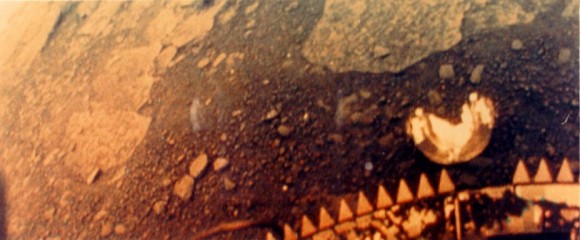
NASA conducted similar missions under the Mariner program. The Mariner 2 mission, which launched on December 14th, 1962, became the first successful interplanetary mission and passed within 34,833 km (21,644 mi) of Venus’ surface. Between the late 60s and mid 70s, NASA conducted several more flybys using Mariner probes – such as the Mariner 5 mission on Oct. 19th, 1967 and the Mariner 10 mission on Feb. 5th, 1974.
The Soviets launched six more Venera probes between the late 60s and 1975, and four additional missions between the late 70s and early 80s. Venera-5, Venera-6, and Venera-7 all entered Venus’ atmosphere and returned critical data to Earth. Venera 11 and Venera 12 detected Venusian electrical storms; and Venera 13 and Venera 14 landed on the planet and took the first color photographs of the surface. The program came to a close in October 1983, when Venera 15 and Venera 16 were placed in orbit to conduct mapping of the Venusian terrain with synthetic aperture radar.
By the late seventies, NASA commenced the Pioneer Venus Project, which consisted of two separate missions. The first was the Pioneer Venus Orbiter, which inserted into an elliptical orbit around Venus (Dec. 4th, 1978) to study its atmosphere and map the surface. The second, the Pioneer Venus Multiprobe, released four probes which entered the atmosphere on Dec. 9th, 1978, returning data on its composition, winds and heat fluxes.
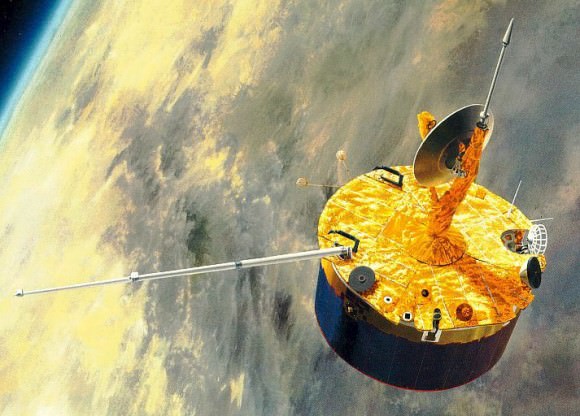
In 1985, the Soviets participated in a collaborative venture with several European states to launch the Vega Program. This two-spacecraft initiative was intended to take advantage of the appearance of Halley’s Comet in the inner Solar System, and combine a mission to it with a flyby of Venus. While en route to Halley on June 11th and 15th, the two Vega spacecraft dropped Venera-style probes into Venus’ atmosphere to map its weather.
NASA’s Magellan spacecraft was launched on May 4th, 1989, with a mission to map the surface of Venus with radar. In the course of its four and a half year mission, Magellan provided the most high-resolution images to date of the planet, was able to map 98% of the surface and 95% of its gravity field. In 1994, at the end of its mission, Magellan was sent to its destruction into the atmosphere of Venus to quantify its density.
Venus was observed by the Galileo and Cassini spacecraft during flybys on their respective missions to the outer planets, but Magellan was the last dedicated mission to Venus for over a decade. It was not until October of 2006 and June of 2007 that the MESSENGER probe would conduct a flyby of Venus (and collect data) in order to slow its trajectory for an eventual orbital insertion of Mercury.
The Venus Express, a probe designed and built by the European Space Agency, successfully assumed polar orbit around Venus on April 11th, 2006. This probe conducted a detailed study of the Venusian atmosphere and clouds, and discovered an ozone layer and a swirling double-vortex at the south pole before concluding its mission in December of 2014. Since December 7th, 2015, Japan’s Akatsuki has been in a highly elliptical Venusian orbit.
Because of its hostile surface and atmospheric conditions, Venus has proven to be a tough nut to crack, despite its proximity to Earth. In spite of that, NASA, Roscosmos, and India’s ISRO all have plans for sending additional missions to Venus in the coming years to learn more about our twin planet. And as the century progresses, and if certain people get their way, we may even attempt to send human colonists there!
We have written many articles about Earth and its closest neighbor here at Universe Today. Here’s The Planet Venus, Venus: 50 Years Since Our First Trip, And We’re Going Back, Interesting Facts About Venus, Exploring Venus By Airship, Colonizing Venus With Floating Cities, and How Do We Terraform Venus?
If you’d like more info on Earth, check out NASA’s Solar System Exploration Guide on Earth. And here’s a link to NASA’s Earth Observatory.
Astronomy Cast also has an interesting episode on the subject. Listen here, Episode 50: Venus.
Dark Stains on Mercury Reveal Its Ancient Crust

Ever since the MESSENGER spacecraft entered orbit around Mercury in 2011, and indeed even since Mariner 10‘s flyby in 1974, peculiar “dark spots” observed on the planet’s surface have intrigued scientists as to their composition and origin. Now, thanks to high-resolution spectral data acquired by MESSENGER during the last few months of its mission, researchers have confirmed that Mercury’s dark spots contain a form of carbon called graphite, excavated from the planet’s original, ancient crust.
Continue reading “Dark Stains on Mercury Reveal Its Ancient Crust”
The Next Generation of Exploration: The DAVINCI Spacecraft
It’s no secret that there has been a resurgence in interest in space exploration in recent years. Much of the credit for this goes to NASA’s ongoing exploration efforts on Mars, which in the past few years have revealed things like organic molecules on the surface, evidence of flowing water, and that the planet once had a denser atmosphere – all of which indicate that the planet may have once been hospitable to life.
But when it comes to the future, NASA is looking beyond Mars to consider missions that will send missions to Venus, near-Earth objects, and a variety of asteroids. With an eye to Venus, they are busy investigating the possibility of sending the Deep Atmosphere Venus Investigation of Noble gases, Chemistry, and Imaging (DAVINCI) spacecraft to the planet by the 2020s.
Led by Lori Glaze of the Goddard Spaceflight Center, the DAVINCI descent craft would essentially pick up where the American and Soviet space programs left off with the Pioneer and Venera Programs in the 1970s and 80s. The last time either country sent a probe into Venus’ atmosphere was in 1985, when the Soviet probes Vega 1 and 2 both orbited the planet and released a balloon-supported aerobot into the upper atmosphere.
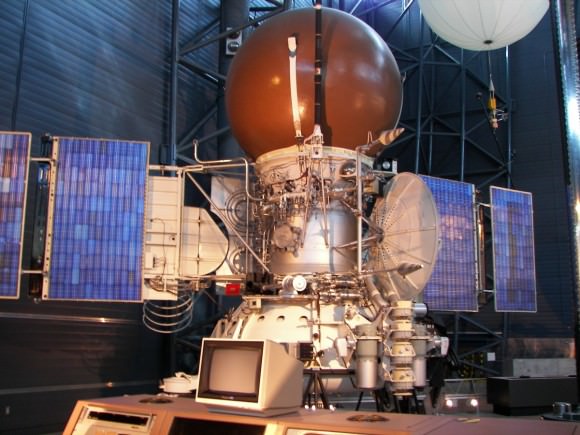
These probes both remained operational for 46 hours and discovered just how turbulent and powerful Venus’ atmosphere was. In contrast, the DAVINCI probe’s mission will be to study both the atmosphere and surface of Venus, and hopefully shed some light on some of the planet’s newfound mysteries. According to the NASA release:
“DAVINCI would study the chemical composition of Venus’ atmosphere during a 63-minute descent. It would answer scientific questions that have been considered high priorities for many years, such as whether there are volcanoes active today on the surface of Venus and how the surface interacts with the atmosphere of the planet.”
These studies will attempt to build upon the data obtained by the Venus Express spacecraft, which in 2008/2009 noted the presence of several infrared hot spots in the Ganis Chasma region near the the shield volcano of Maat Mons (shown below). Believed to be due to volcanic eruptions, this activity was thought to be responsible for significant changes that were noted in the sulfur dioxide (SO²) content in the atmosphere at the time.
What’s more, the Pioneer Venus spacecraft – which studied the planet’s atmosphere from 1978 until its orbit decayed in 1992 – noted a tenfold decreased in the density of SO² at the cloud tops, which was interpreted as a decline following an episode of volcanogenic upwelling from the lower atmosphere.

Commonly associated with volcanic activity here on Earth, SO² is a million times more abundant in Venus’ atmosphere, where it helps to power the runaway greenhouse effect that makes the planet so inhospitable. However, any SO² released into Venus’ atmosphere is also short-lived, being broken down by sunlight within a matter of days.
Hence, any significant changes in SO² levels in the upper atmosphere must have been a recent addition, and some scientists believe that the spike observed in 2008/2009 was due to a large volcano (or several) erupting. Determining whether or not this is the case, and whether or not volcanic activity plays an active role in the composition of Venus’s thick atmosphere, will be central to DAVINCI’s mission.
Along with four other mission concepts, DAVINCI was selected as a semifinalist for the NASA Discovery Program‘s latest calls for proposed missions. Every few years, the Discovery Program – a low-cost planetary missions program that is managed by the JPL’s Planetary Science Division – puts out a call for missions with an established budget of around $500 million (not counting the cost of launch or operation).
The latest call for submissions took place in February 2014, as part of the Discovery Mission 13. At the time, a total of 27 teams threw their hats into the ring to become part of the next round of space exploration missions. Last Wednesday, September 30th, 2015, five semifinalists were announced, one (or possibly two) of which will be chosen as the winner(s) by September 2016.
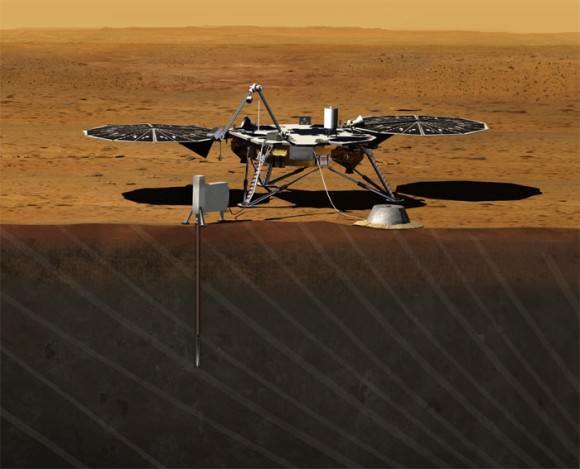
These finalists will receive $3 million in federal grants for detailed concept studies, and the mission (or missions) that are ultimately chosen will be launched by December 31st, 2021. The Discovery Program began back in 1992, and launched its first mission- the Mars Pathfinder – in 1996. Other Discovery missions include the NEAR Shoemaker probe that first orbited an asteroid, and the Stardust-NExT project, which returned samples of comet and interstellar dust to Earth.
NASA’s MESSENGER spacecraft, the planet-hunting Kepler telescope, and the Dawn spacecraft were also developed and launched under the Discovery program. The winning proposal of the Discovery Program’s 12th mission, which was issued back in 2010, was the InSight Mars lander. Set to launch in March of 2016, the lander will touch down on the red planet, deploy instruments to the planet’s interior, and measure its seismic activity.
NASA hopes to infuse the next mission with new technologies, offering up government-furnished equipment with incentives to sweeten the deal for each proposal. These include a supply of deep space optical communications system that are intended to test new high-speed data links with Earth. Science teams that choose to incorporate the laser telecom unit will be entitled to an extra $30 million above their $450 million cost cap.
If science teams wish to send entry probes into the atmospheres of Venus or Saturn, they will need a new type of heat shield. Hence, NASA’s solicitation includes a provision to furnish a newly-developed 3D-woven heat shield with a $10 million incentive. A deep space atomic clock is also available with a $5 million bonus, and NASA has offered to provide xenon ion thrusters and radioisotope heater units without incentives.
As with previous Discovery missions, NASA has stipulated that the mission must use solar power, limiting mission possibilities beyond Jupiter and Saturn. Other technologies may include the NEXT ion thruster and/or re-entry technology.


